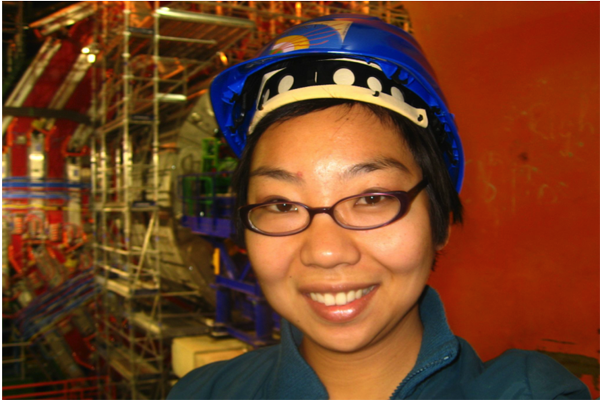What’s next for particle physicists, post-Higgs?

In March of last year, scientists working with the Large Hadron Collider at the European Organization for Nuclear Research in Geneva, Switzerland, identified the Higgs boson, the last elusive particle in the Standard Model of physics. The Higgs particle, said Northeastern assistant professor of physics Toyoko Orimoto, one of the scientists on the team, can be used to explain how elementary particles acquire mass. “Before the discovery of the Higgs boson, the Standard Model was like a puzzle with one piece missing,” she said, “and you kind of know what that piece will look like.”
Orimoto hopes the Large Hadron Collider will be able to address many more unanswered questions in physics. “The Higgs particle is interesting,” she said, “but what really captures my imagination is thinking about possibilities beyond the Standard Model.”
Backed by an Early Career Award from the Department of Energy, Orimoto hopes to begin exploring those other possibilities.
For her, the two biggest questions still left unanswered by the Standard Model are gravity and dark matter. “Dark matter and dark energy make up more than 95 percent of the universe, and yet the Standard Model doesn’t address them,” she said.
Dark matter was hypothesized to explain the large discrepancies between the gravitational behavior of large astronomical objects and the amount of detectable matter they contain. Physicists suspect that dark matter is made up of elementary particles that are difficult to observe in the laboratory because of their weak interactivity.
Gravity is a more well-know force, but it’s also extremely weak for unknown reasons, Orimoto said. You can get a sense of its weakness, she explained, by counteracting earth’s gravitational pull on a tiny paperclip by moving it with a single magnet. While classical physics does a fine job of explaining how gravity works on a macroscopic scale, things fall apart when particle physicists try to understand it at the quantum level.
One of the most compelling theories often used to explain anomalies such as dark matter and the weakness of gravity, Orimoto said, is supersymmetry, wherein all of the particles described in the Standard Model have a supersymmetric “brother” particle. In supersymmetry, there are also multiple Higgs bosons, a fact that Orimoto and her colleagues at the LHC plan to leverage as they begin to probe deeper into the behavior of the newly discovered Higgs.
The researchers will take a closer look at the Higgs’ behavior using hordes of data collected at the LHC. If some of its properties cannot be explained by the Standard Model, Orimoto said, then supersymmetry or some other new theory of physics could be at work.
She can’t wait to investigate. “I started to get interested in the idea that everything in the universe was made up of this small set of elementary particles and that blew my mind,” said Orimoto, recalling the moment in the 1990s when scientists announced the discovery of the top quark, the heaviest of the elementary particles in the Standard Model. “And it hasn’t stopped blowing my mind.”





